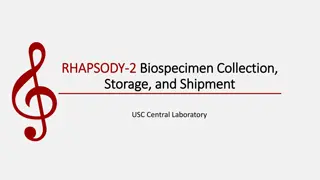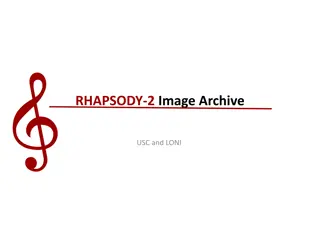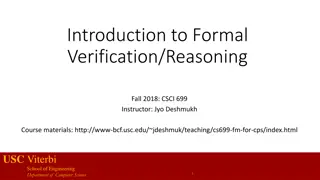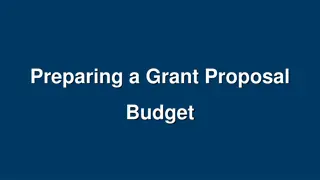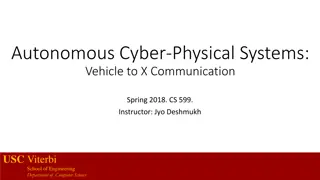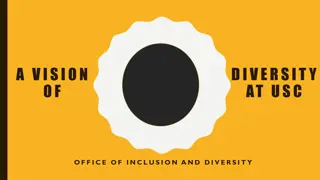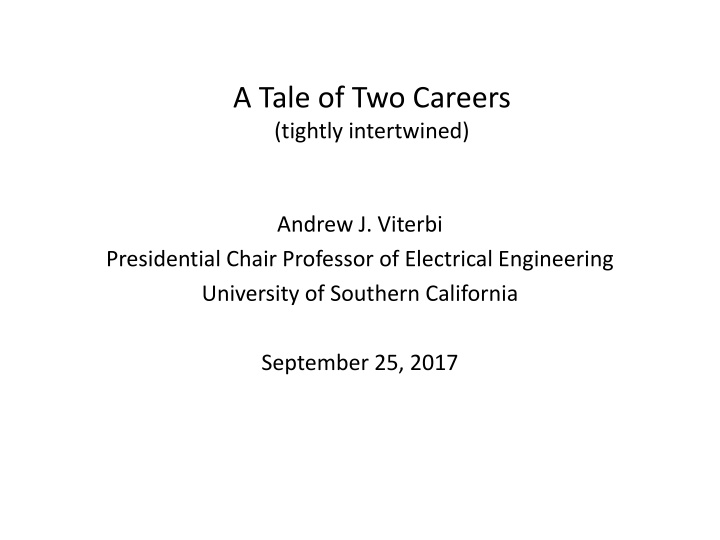
Intertwined Careers of Andrew J. Viterbi - A Timeline of Achievement
Discover the remarkable careers of Andrew J. Viterbi, from his prestigious roles as a chair professor to his pivotal contributions in electrical engineering. Explore the intersections of digital evolution, Markov entities, and continuous-time Markov processes that shaped his journey through various institutions and industries.
Download Presentation

Please find below an Image/Link to download the presentation.
The content on the website is provided AS IS for your information and personal use only. It may not be sold, licensed, or shared on other websites without obtaining consent from the author. If you encounter any issues during the download, it is possible that the publisher has removed the file from their server.
You are allowed to download the files provided on this website for personal or commercial use, subject to the condition that they are used lawfully. All files are the property of their respective owners.
The content on the website is provided AS IS for your information and personal use only. It may not be sold, licensed, or shared on other websites without obtaining consent from the author.
E N D
Presentation Transcript
A Tale of Two Careers (tightly intertwined) Andrew J. Viterbi Presidential Chair Professor of Electrical Engineering University of Southern California September 25, 2017
Careers Timeline JPL/USC 1957-1963 UCLA 1963-1975 UCSD 1975-1985 Linkabit 1969-1985 UCSD 1985-1994 Qualcomm 1985-2000 ------------------------------------------------------------------------------ USC/Technion/UCSD 2000-- Viterbi Group 2000--
External Influences Andrey Andreyvich Markov (1906) The Cold War (1948-1989) Digital (R)Evolution (1948---)
Andrey Andreyevich Markov (1856-1922) Disciple of P. Chebyshev Markov Chains (1906) (AKA Sequences, Processes) Politically active in 2ndDuma in opposition to Tsar 1913 Organized Celebration of 200thAnniversary of Law of Large Numbers As Protest of 300thAnniversary of Romanov Dynasty
Processes, Sequences and Chains: Three Markov Entities Continuous Time, Continuous State Process Discrete Time, Continuous State Sequence Discrete Time, Discrete State Chain
Continuous Markov process p(y;t2|z;t 1,y0 ;t0) = p(y;t2|z;t 1)
Continuous Time Markov Process Theory Uhlenbeck, Ornstein: Kolmogorov Andronov, Pontryagin, Witt Wang, Uhlenbeck Siegert Darling, Siegert 1930 1931 1933 1945 1951 1953
Communication Application: Phase-locked-loop behavior in the presence of noise 1st Order Loop (without Filter): Mechanical Analog of 1st Order Loop: Pendulum
Qualitative behavior of the phase-error probability-density function for the first-order loop Temporal Evolution
Fokker-Planck Equation for Probability Density-function of Continuous Markov Process Let
First-order-loop steady-state phase-error probability densities for zero frequency-error ( Tikhonov Distribution, 1960) Mean Frequency of Skipping Cycles =Inverse 1st Passage Time: (Viterbi, 1963)
Discrete Time-Continuous State Sequences Linear Filtering/Estimation Stochastic Signals in Noise Gauss Wiener Bode, Shannon Kalman (Filter) Early 1800 s 1931, 1942 1950 1960
Wiener Filtering Model: Stochastic Signal z generated by filtering white noise u observed in presence of additive white noise n i.i.d. Gaussian nk xk xk-1 zk yk uk a(D) i.i.d. Gaussian white b(D) If a and b are scalars, state x is Markov xk = uk + b xk-1 yk = axk-1 + nk
General Discrete Linear Filter H(D)=a(D)/b(D) . + + z(D) a1 a2 an xk xk-1 xk-2 xk-n u(D) + b1 b2 bn + + z(D)= H(D) u(D), H(D) = a(D)/b(D) a(D)= a1D+a2D2+a3D3+ +anDn b(D)=1-b1D b2D2 .- bnDn
Vector Equations . + + z(k) a1 a2 an xk xk-1 xk-2 xk-n + u(k) b1 b2 bn . + + x(k) = B x(k-1) + u(k); u(k) = [uk,0,0 .0]T z(k) = A x(k-1); a = [a1, a2, ..an]
Time-varying Linear Model in Noise n(k) x(k+1) x(k) z(k) y(k) u(k+1) a(k) i.i.d. Gaussian white n(k) is i.i.d. sequence of Gaussian r.v. B(k+1,k) Problem: x(k+1) = B(k+1,k) x(k) + u(k+1) Find Least Mean Square Error (LMSE) Estimate xk of xk z(k) = a(k) . x(k) (Since Inputs are Gaussian, LMSE Filter/Estimator is Linear) y(k)=z(k) + n(k)
LMSE Filter (Kalman) INNOVATION GAIN x(k+1|k) x(k|k-1) y(k) (k) z(k|k-1) K(k) A(k) + _ B(k,k-1) x(k+1|k) = B(k+1|k) x(k|k-1) +K(k) (k) Gain Equation (k) = y(k) z(k|k-1) K(k) is Function of A, B and MSE(k) Nonlinear Recursion for MSE(k) ^ z(k|k-1) = A(k) x(k|k-1)
Applications While based on Wiener filter theory for extracting stochastic signals from noise, major applications have centered on estimation of motion parameters in navigation and trajectory and orbit determination, particularly since it applies equally for time-varying systems. Additional benefit is recursion for Mean Square Error (Riccati equation)
Claude Shannon 1916-2001 B.S., U. of Michigan, 1936 M.S. , MIT, 1937 (thesis: Boolean Algebra for Computer Logic) Ph.D., MIT, 1940 (Algebra for Theoretical Genetics) Mathematical Theory of Communication , BSTJ 1948 Mathematical Theory of Cryptography (memo, 1945) [later ..of Secrecy Systems , BSTJ 1949]
Discrete Time Discrete (Finite) State Information Theory, Convolutional Codes, Etc. Shannon, 1948 Elias, 1955 Wozencraft, 1957 Fano, 1963 Viterbi, 1967 Forney, 1972
Intersymbol Interference (ISI) Model zk . yk + + + + a1 a2 an-1 xk xk-1 xk-2 xk-n nk u(k) x(k) = xk-n , xk-n+1, .. xk-1 , xk yk =a . x(k) + nk where xk = +1 or -1 with equal probability x(k) is n-dimensional binary vector with 2n states nk is Gaussian i.i.d. sequence
m33 4-State Markov Graph Example S 3 m13 m32 m12 S S State Metric M1(k) 1 2 m21 m20 Branch metric m01 S0 m00 Mj(k)=Maxi {Mi(k-1) + mij(k)} where mij = - if branch is missing.
Convolutional Channel Code Example 110101 x x n(k) za State Diagram --+-+- .. -ya +yb + y(k) x(k) zb - - x +ya -yb +ya -yb -ya+yb + - - + +ya +yb General Decoding Algorithm: -ya -yb Branch Metric -ya -yb Mj (k+1) = Maxi [Mi (k) +mij(k)] States: Mj ++ ( mij = - if branch ij is missing) +ya +yb Applies for arbitrary generators even time-varying
Some Markov Comparisons Processes (Continuous Time and State): Partial differential equation describes evolution of pdf even for nonlinearities, but exact solution only for 1st order systems. Sequences (Discrete Time, Continuous State): Least Mean Square Error Linear Estimator (even for time-varying) Optimum for Gaussian i.i.d. inputs and additive noise Chains (Discrete Time, Discrete (Finite) State): Maximum Likelihood Estimator for arbitrary nonlinear and time- varying systems but independent inputs and noise
Applications and Extensions Hidden Markov Model Examples Speech Recognition Data Recording Search Engines Genome Sequence Alignment Machine Learning
Entrepreneurial Career in Telecommunications JPL: the Cold War and Space Linkabit Corporation: DoD and NASA Qualcomm, Inc.: Commercial and Consumer All Exploiting Spread Spectrum
Spread Spectrum Purposes Interference Suppression Energy Density Reduction Ranging Time Delay Measurement
Linear Shift Register Sequence Generator (wideband noise generator)
Pseudorandom Sequence Generation By proper selection of the tap values (0 or 1), the generated sequence will be a Maximal Length Shift Register Sequence; As a consequence it will have 3 Randomness Properties thus imitating Bernoulli (coin flipping) sequence [Golomb,1967]: R1: Balanced (nearly) equal number 0 s and 1 s R2: Run Length Frequencies R3: Delay and Add near zero auto-correlation (i.i.d.)
Jamming Margin* Received Power from Communicator, S watts Received Power from Jammer, N watts (after spreading: bandwidth W Hz; Density N0 w/Hz) Jamming Margin: ? ? = ?0? ??? = ?/? ??/?0 W/R: spreading factor, aka processing gain Eb/N0: modem requirement for low error rate * Defense and Space
Code Division Multiple Access (CDMA)* In a Spread Spectrum Cellular Telecom System, suppose all users transmissions are Power Controlled so as to arrive at Base Station Receiver with Equal Powers. Given M users with independent spreading sequences, Margin dictates number of supportable users, since: Noise consists of all Other Users ? ? = ? = ? 1 Thus, proceeding as for Jamming, Number of Other Users/Cell ?/? ??/?0 (additional advantage: suppression of adjacent cell interference) ? 1 ? ? 1 = *Commercial and Consumer
Thats It Six Decades of Fun


